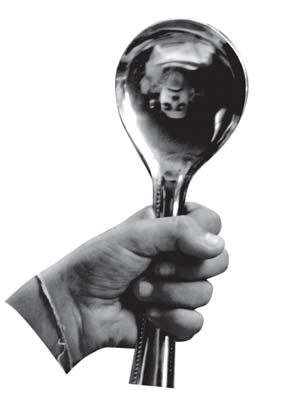For a real object, a concave mirror always forms real and inverted images when object is between infinity and focus and forms virtual and erect when object is between focus and pole , but in the following example , why is there a virtual and INVERTED image
Example: When we look in the spoon from concave side

-
1$\begingroup$ That's a real image, why do you think it's virtual? You can look at real images without projecting them onto a screen. $\endgroup$– Sebastian RieseCommented Mar 12, 2022 at 17:20
1 Answer
Expanding a little on Sebastian Riese's comment, your face is much more than $R=2f$ away from the spoon. [The spoon is very curved, so the radius of curvature $R$ is small (probably less than 5 cm).] A ray diagram will show rays converging to points on a diminished inverted real image between $f$ and $2f$ from the mirror. But there's no screen, so the rays continue on beyond the image and enter your eye as rays diverging from points on the image.
[Because the spoon is so curved, and not even part of a sphere, the 'thin mirror' theory that I've just appealed to holds only approximately, and the image will be a distorted one.]
